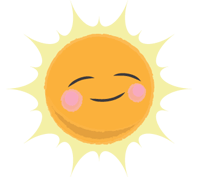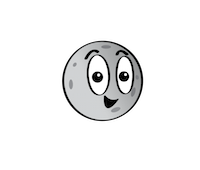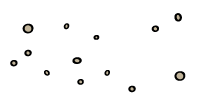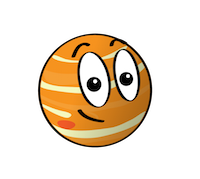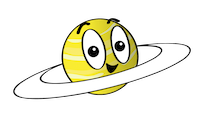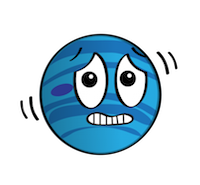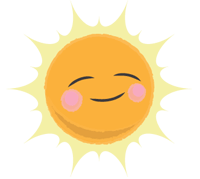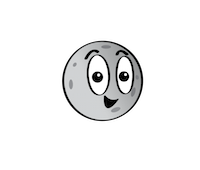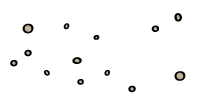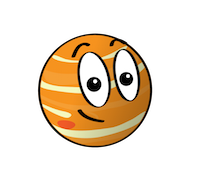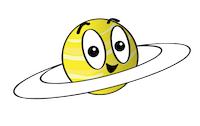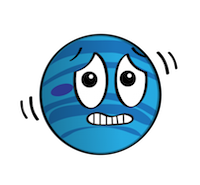Uranus is made of water, methane, and ammonia fluids above a small rocky center. Its atmosphere is made of hydrogen and helium like Jupiter and Saturn, but it also has methane. The methane makes Uranus blue.
Explore Uranus! Click and drag to rotate the planet. Scroll or pinch to zoom in and out. Credit: NASA Visualization Technology Applications and Development (VTAD)
Uranus also has faint rings. The inner rings are narrow and dark. The outer rings are brightly colored and easier to see. Like Venus, Uranus rotates in the opposite direction as most other planets. And unlike any other planet, Uranus rotates on its side.
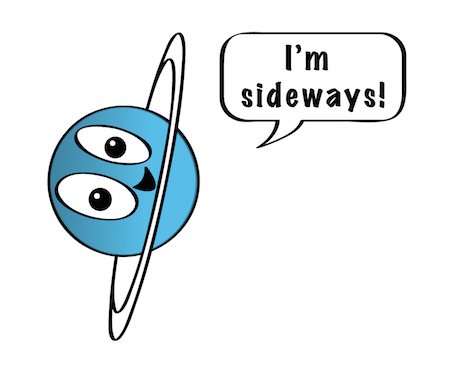
Structure and Surface
- Uranus is surrounded by a set of 13 rings.
- Uranus is an ice giant (instead of a gas giant). It is mostly made of flowing icy materials above a solid core.
- Uranus has a thick atmosphere made of methane, hydrogen, and helium.
- Uranus is the only planet that spins on its side.
- Uranus spins the opposite direction as Earth and most other planets.
Time on Uranus
- One day on Uranus lasts a little over 17 hours (17 hours and 14 minutes, to be exact).
- One year on Uranus is the same as 84 years on Earth. That’s a long time to wait for a birthday cake.
Uranus' Neighbors
- Uranus has 28 known moons.
- Uranus is the seventh planet from the Sun. That means Saturn and Neptune are Uranus’ neighboring planets.
Quick History
- Uranus was discovered in 1781 by William Herschel in Great Britain.
- Uranus has only been visited by Voyager 2.
What does Uranus look like?
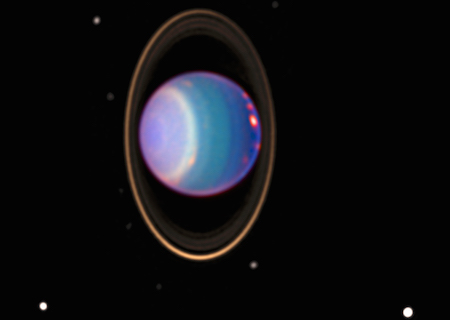
This picture shows Uranus surrounded by its four major rings and by 10 of its moons. This image has colors added to show the different altitudes and thicknesses of clouds in the atmosphere. Green and blue areas show where the atmosphere is clear and sunlight can get through. The yellow and grey parts have thicker clouds. Orange and red colors mean very high clouds, similar to cirrus clouds on Earth.
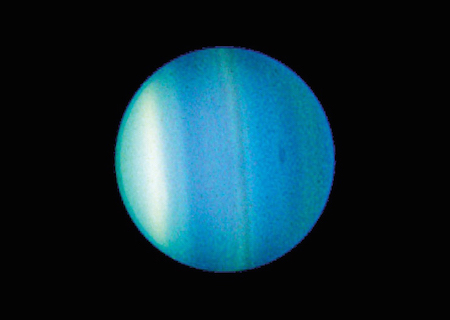
The Hubble Space Telescope took this picture of Uranus. You can see bands and a dark spot in Uranus' atmosphere.



